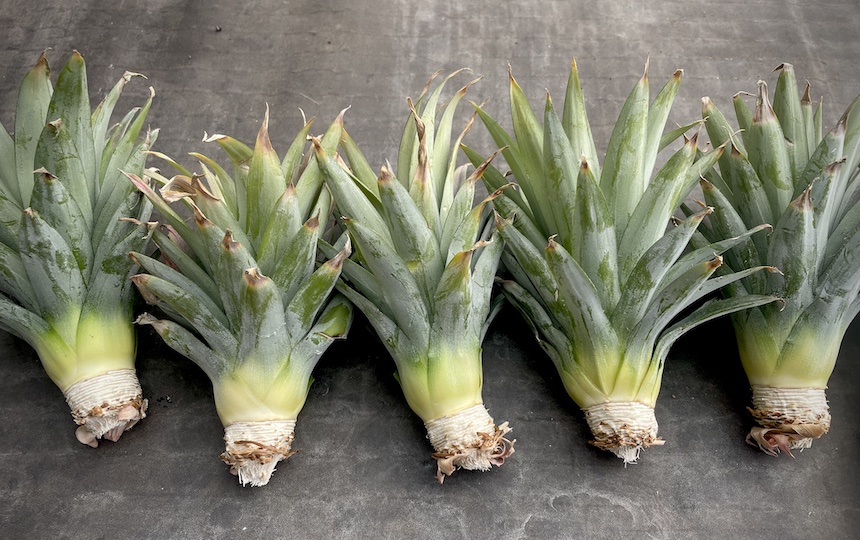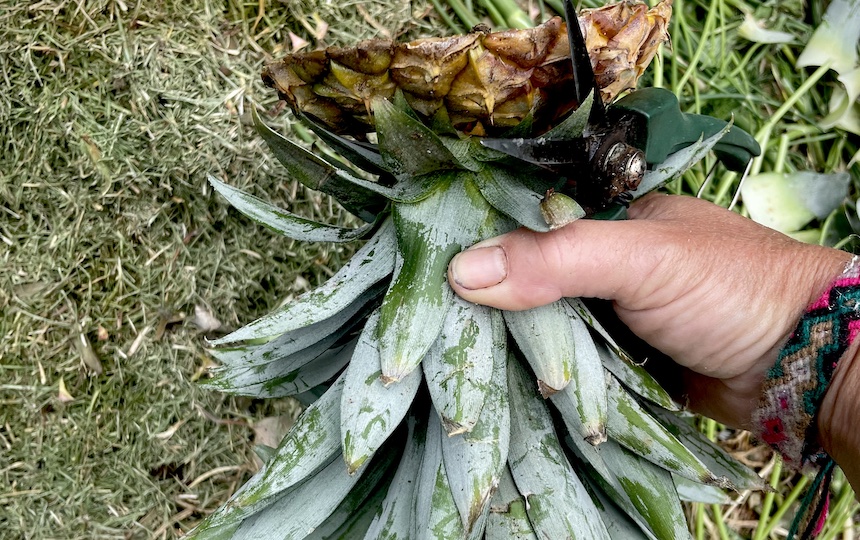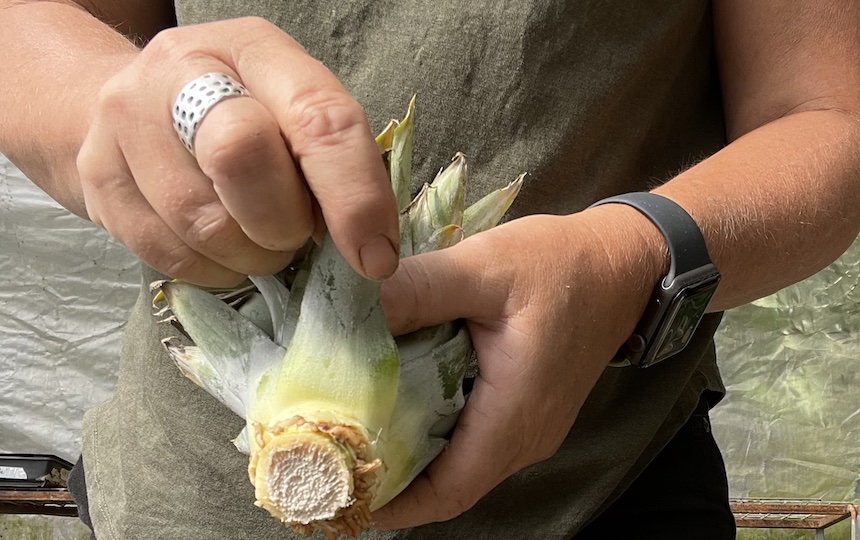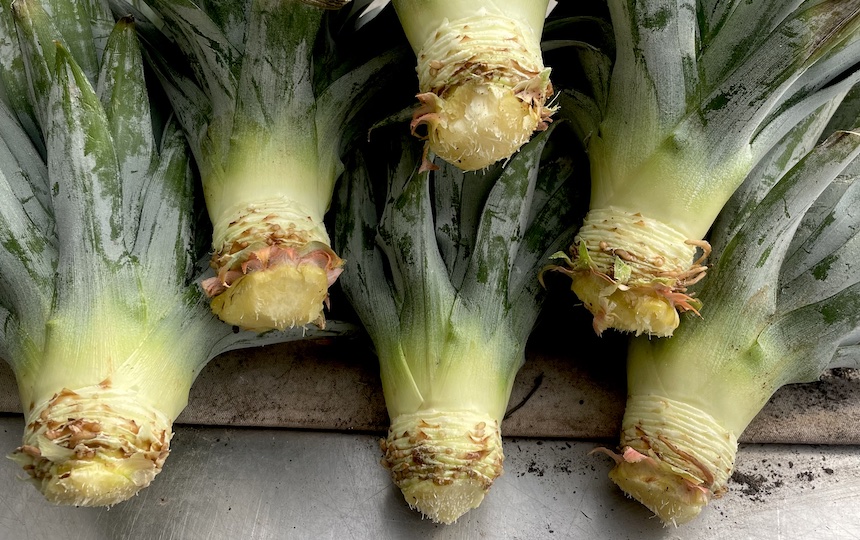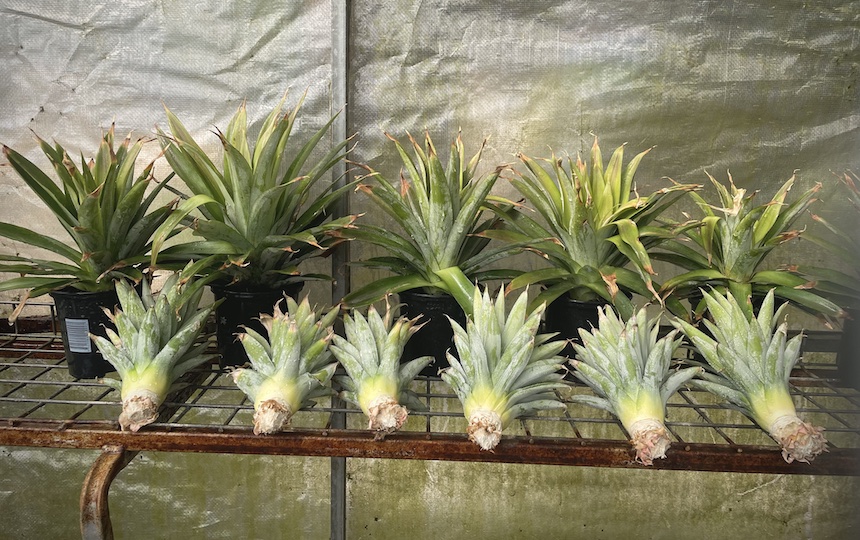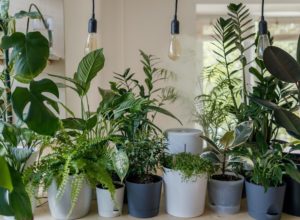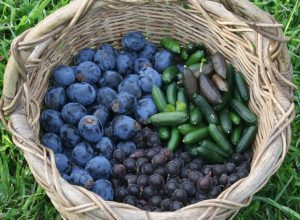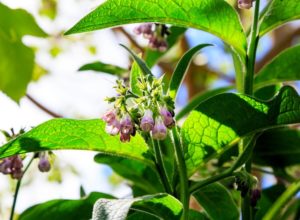Don’t discard that prickly pineapple top, put it to good use instead. We show you how to start growing pineapples from tops.
After chopping the top off a fresh pineapple, have you ever found yourself hovering over the compost bucket with its green spiky foliage in hand, wondering if you could ever grow your own pineapple plant? The answer is yes. And if you have a lot of patience and enjoy a bit of a challenge, then here’s how to go about it.
Pineapples (Ananas comosus) are a member of the bromeliad family and are mainly grown in a warm and tropical climate. They will usually grow one to two pineapple fruits from the centre of the plant over its lifetime of between three and five years.
As a tropical plant, pineapples require daytime temperatures of around 28-30 ºC and warm night temperatures of above 18 degrees to fruit, so keeping them in a bright spot indoors so they stay warm in winter will be needed to promote fruiting.
How to prepare for planting
Remove excess flesh from around the base of your pineapple top before removing about six layers of leaves from the base to expose around two centimetres of stalk. Sometimes you may see small arial roots where the leaves have been removed which is great, because these will be your pineapple plant’s first new roots.
Allow your pineapple top to dry around the base by placing it somewhere warm and dry for a couple of days. Some people have luck just putting the top of a pineapple in water but, as pineapple plants are susceptible to fungal problems, allowing the newly prepared top to air dry will give your new plant a better start to life.
Potting up
Because pineapples are a member of the bromeliad family they’re happiest in well-drained soil. So when potting up, use a good-quality, free-draining potting mix for succulents and or orchids and plant into a 15-centimetre pot – don’t worry if you don’t see any arial root growth at this stage, it will throw roots soon enough – and water in well with a seaweed solution or fish emulsion to promote root development and to settle your pineapple into its new home.
In around a year’s time, your pineapple will have outgrown its pot and its leaves will be between 20 to 40 centimetres long, so it’s time to repot it into something larger, but make sure it’s still manageable to move inside and outside with the weather, because depending on where you live, you’ll need to try and replicate the tropics – pineapples don’t like cold temperatures.
With its silvery-blue sword-like leaves, your pineapple can make an interesting indoor plant, so give it a nice pot that you are happy to look at every day.
Why won’t it fruit for me?
Sometime it doesn’t matter how hard you try, some plants just won’t be fooled that they are not in the tropics and your pineapple might be one. You can always try putting your pineapple plant – pot and all – into a large clear plastic bag and add an apple or banana into the bag with it. These fruits release ethylene gas that promote flowering and fruiting, and may just convince your pineapple to develop fruit.
Growing more plants from waste
Now you’ve grown tropical plants and fruits from what’s essentially waste. Here are a few others things to try.
If you have some onions in your pantry that have started to sprout, plant them in your garden for a crop of calcots. Calcot onions are the young sprouted onions from over-wintered plants and are celebrated vegetable in parts of Spain. They are milder in flavour than an onion and can be used like spring onions.
Celery and spring onion bases can be grown again, as can carrot and parsnip tops for either a leaf or seed crop. Basil leaves that are attached to hydroponically grown plants can be cut back and planted into pots and, once watered well with a seaweed tonic, should continue to grow.
A rummage around your pantry, too, can provide a great number of free seeds such as coriander, buckwheat, dill, celery, sesame, popping corn and fennel seeds.

